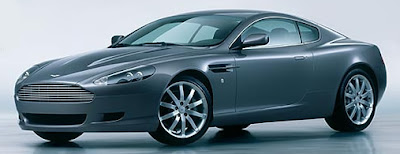
"Aston Martins have a highly distinctive form language. The lines are beautiful and harmonious, giving our cars the appearance of motion even while stationary", explains Director of Design Marek Reichman.
Great design, however, is not just about form; it is also about function. An Aston Martin is by definition very fast, so it needs to be aerodynamically efficient. It must be superbly stable at high speed - even the exhaust silencer is aerodynamically shaped to help achieve this.
The result is that DB9 drives arrow-straight at high speed yet, like all great Aston Martins, it does so with supreme elegance and grace.
DB9 is new from the ground up. Every feature has been tailored to make the world's finest sports GT. The starting point was to define the ideal dimensions, proportions and materials for the chassis. Aston Martin did not use an adapted platform from an existing family or luxury saloon - the most common starting point for GT cars. This approach can lead to compromise in styling and weight and loss of character.
Aston Martin developed its own incredibly light and strong aerospace-specification bonded aluminium structure. This 'VH' (Vertical/Horizontal) architecture, which is unique to Aston Martin, has given DB9 one of the most structurally efficient body frames in the car industry. Its enormous rigidity aids handling, driver feedback and safety. More than any other single component, the advanced aluminium structure is the reason for DB9's extraordinary nimbleness, responsiveness and overall character.
DB9 is a luxurious sports car. It is supremely comfortable, with a cabin hand-trimmed in beautiful, natural materials - primarily wood and leather. There is the latest in modern technology, yet there are no superfluous controls or displays. There is a minimum of distraction. Even the satellite navigation screen motors seamlessly away when not in use.
Yet the car has very high equipment levels, as you would expect in a thoroughbred sports car with GT levels of comfort and refinement.